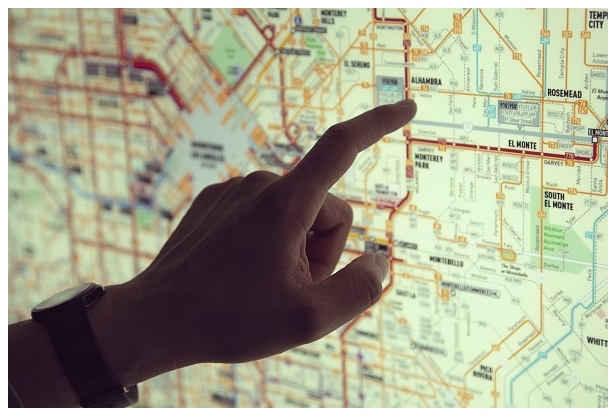Paper Maps in a Digital World
In today's digital age, where technology seems to dominate every aspect of our lives, the enduring relevance of paper maps may come as a surprise. However, paper maps still hold a significant place in our society, offering unique advantages and features that digital maps cannot replicate. Despite the convenience and accessibility of digital alternatives, the importance of paper maps remains undeniable.

Paper Maps and Why You Need Them

Advantages of Paper Maps
One of the key advantages of paper maps is their tangible and reliable nature. Unlike digital maps that rely on technology and internet connectivity, paper maps provide a backup option in case of technology failures or lack of internet access. When electronic devices fail, or you find yourself in remote areas where the technology may not be readily available, a paper map can be your reliable companion.
Paper maps offer better spatial awareness and a broader perspective than their digital counterparts. A paper map lets you see the entire area at once, allowing for a better understanding of the surrounding geography. This broader view can be instrumental when planning routes, exploring new territories, or gaining a deeper understanding of the landscape.
Paper maps are practical and often essential for outdoor activities and remote areas. When hiking, camping, or engaging in other outdoor adventures, electronic devices may not be accessible or withstand rugged conditions. On the other hand, paper maps are durable, portable, and do not rely on batteries or wireless signals. They provide reliability and autonomy in navigating and exploring the great outdoors.
Moreover, paper maps offer a sense of adventure, exploration, and nostalgia that digital maps cannot replicate. The act of physically unfolding a map, tracing your finger along the routes, and marking your progress can evoke a sense of excitement and connection with the environment. It brings back memories of when paper maps were the primary navigation tool, adding a touch of nostalgia to the experience.
Complementing Digital Maps
In the 21st century, geographers and map enthusiasts can use both paper and digital maps to leverage each medium's advantages fully. Paper maps are still indispensable for fieldwork and navigation. They are portable, reliable, and do not rely on technology or internet connectivity. Whether researching remote areas or exploring unfamiliar territories, paper maps provide the practicality and accuracy that digital maps may not always offer.
On the other hand, digital maps offer a range of benefits that paper maps cannot match. Digital maps provide ease of access, interactivity, and the ability to update and customize information in real-time. Click here to read more about how maps help us with modern day urban planning and more!
They are ideal for data analysis, visualization, and sharing information with a large audience. Digital maps also offer features like GPS navigation, live traffic updates, and integration with other applications, making them convenient for everyday use.
By combining the strengths of paper and digital maps, geographers can comprehensively understand the landscapes they study.
Paper maps offer a solid foundation for fieldwork, while digital maps provide dynamic and customizable tools for data analysis and visualization. The synergy between these two mediums allows for a more holistic approach to geographical research and practical applications.
Accuracy and Reliability of Paper Maps
Contrary to popular belief, paper maps often provide more accuracy than satellite views. While digital maps rely on satellite imagery, paper maps are based on carefully curated and verified data. They allow you to mark preferred route landmarks and compare accuracy with other maps. This level of customization and scrutiny can lead to more reliable navigation and decision-making.
Furthermore, paper maps are not susceptible to common technological issues.  They never freeze up, run out of battery, or lose wireless signals like GPS devices.
They never freeze up, run out of battery, or lose wireless signals like GPS devices.
Regarding safety and distraction, paper maps have an advantage over GPS devices. Paper maps do not require constant interaction or staring at a screen, minimizing distractions while navigating.
This allows for better focus on the surroundings and enhances safety, especially when driving. Paper maps also eliminate the risk of becoming overly dependent on GPS technology, which can be problematic if the devices fail, or GPS signals are interrupted.
Cognitive Benefits of Paper Maps
Using paper maps can have cognitive benefits that go beyond mere navigation. Research suggests that paper maps help users acquire a deeper knowledge faster and more efficiently.
Reading comprehension and retention are often better when reading on paper than on digital interfaces.
Interacting with a paper map, tracing routes, and mentally connecting the dots creates a cognitive map in the brain, improving memory and navigation skills. Paper maps provide cues that enhance the overall learning experience.
Additionally, paper maps allow individuals to develop a better sense of spatial awareness and imagination. By engaging with a paper map, one can visualize and imagine the future, envisioning travel routes and exploring new destinations in their mind.
This ability to mentally navigate and understand the world profoundly impacts individuals' memory, creativity, and overall cognitive development.

Conclusion
In conclusion, paper maps remain relevant and vital in the digital age.
Their tangible nature, reliability as a backup, and ability to provide a broader perspective make them indispensable tools in various scenarios.
Paper maps complement digital maps by offering practicality, accuracy, and a sense of adventure that their electronic counterparts cannot replicate.
Both paper and digital maps have their unique strengths and should be used in conjunction to explore and navigate the world around us fully.
So, let us embrace paper maps' enduring charm and significance in a technology-driven society.
/1004/site-assets/logo.png)
/1004/site-assets/phone.png)
/1004/site-assets/cart.png)
/1004/site-assets/dateseal.jpg)
/1004/site-assets/creditcards.png)